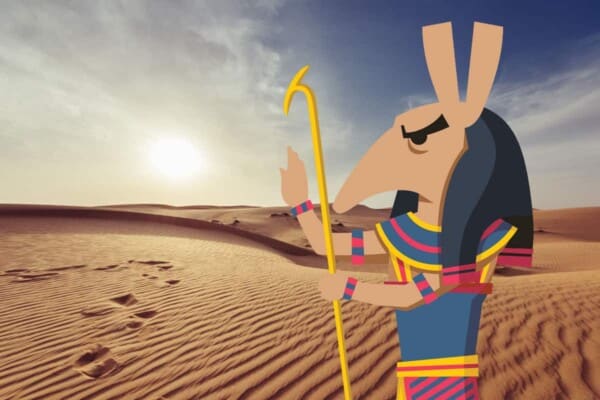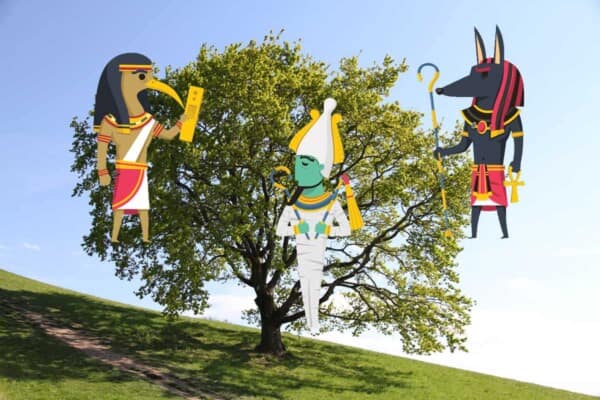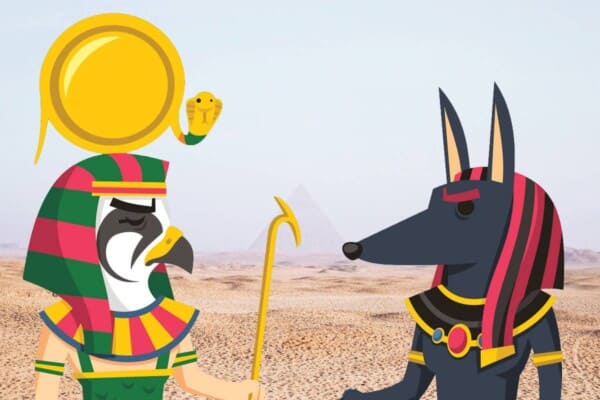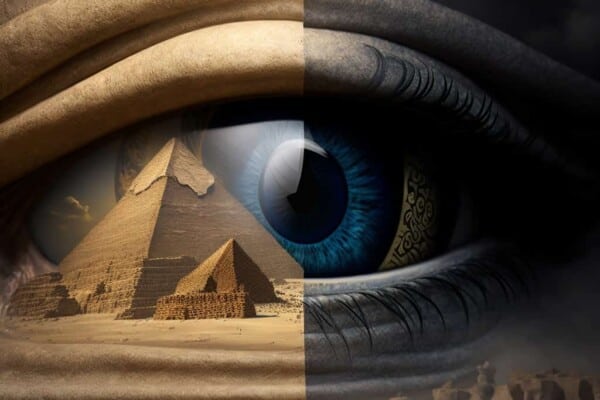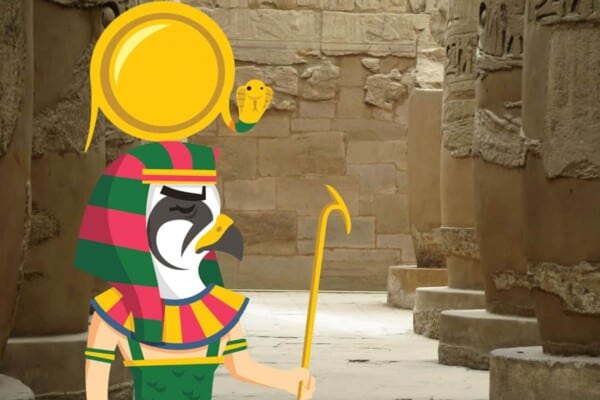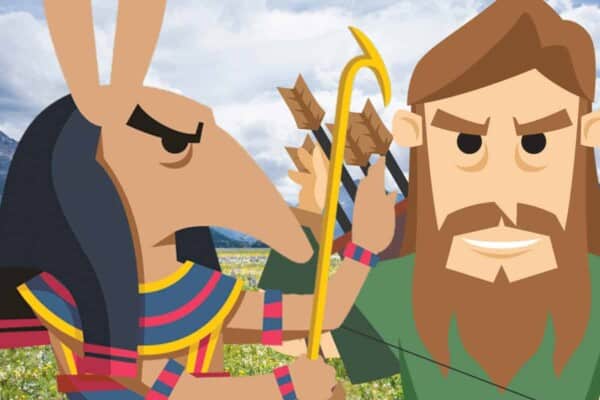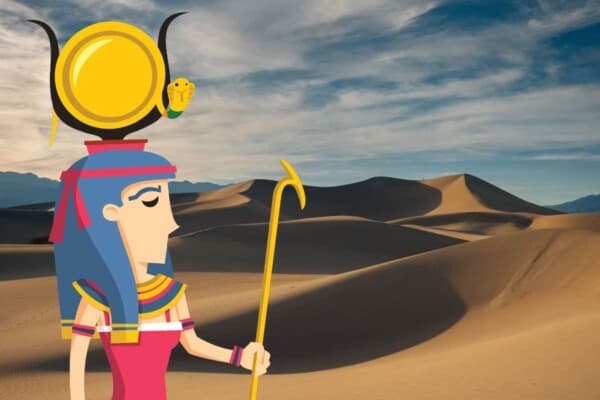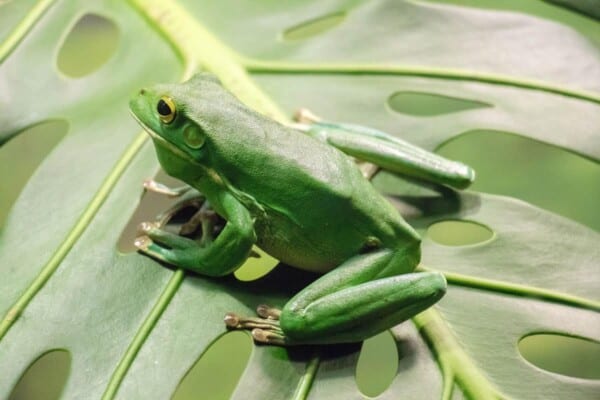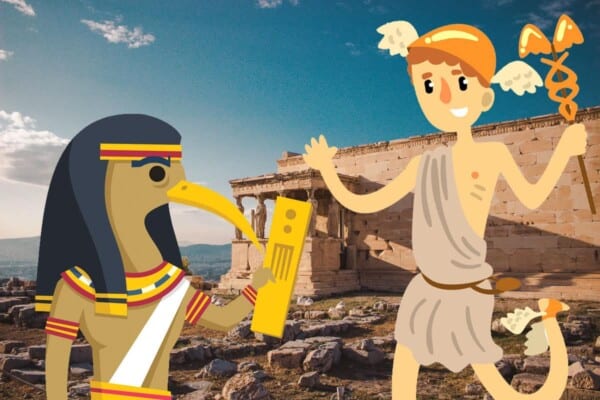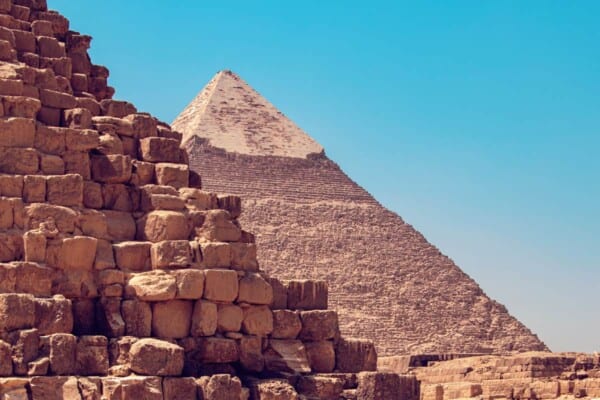Horus was the Egyptian god of kingship and the sky. The Horus most often discussed was a prince, son of Osiris and Isis.
There is a distinction between Horus the Elder (Her-Ur) and Horus the Younger (Heru-pa-khered), and depending on the myth they are either aspects of the same god or different gods. He was a falcon god and one of the most revered in Egyptian myth.
The following are facts about Horus across the span of Egyptian myth. Some were contradictory while others were a continuous story. All of these myths, though, were incredibly fascinating!
A Few Facts about the Egyptian God Horus
1. Though his most common parents are Osiris and Isis, Geb and Nut were sometimes his parents instead
Horus the Elder was a representation of the sky, as was Nut. This made Osiris, Isis, Set, and Nephthys his siblings rather than parents and aunt and uncle. Horus the Younger’s siblings were generally Bastet and Anubis.
2. Horus’s wife was sometimes his mother
Hathor was a consort of Ra and/or Horus. She was one of the major deities of the Egyptian pantheon. She was a sky goddess and considered the mother of all pharaohs, and she mothered many godly sons. In some versions, she is instead the mother of Ra and/or Horus, and in others she is both mother and consort.
3. During Greco-Roman occupation, the god Apollo was associated with Horus
Apollo was also a sun god and the son of the king of the pantheon
4. Horus was conceived after his father’s death
When Set killed his brother, Osiris, he dismembered his pieces and scattered them across Egypt, preventing Osiris’s resurrection. Osiris’s wife and sister, Isis, collected all the pieces except the phallus and instead fashioned him a new one. Either before or after she completed Osiris’s resurrection, she coupled with Osiris to conceive Horus.
5. Horus’s uncle killed him as a baby
Isis took her son and hid him from Set, who had killed Osiris and wanted to kill Horus too. The child god was hidden in a thicket, but Set in the form of a snake found him and bit him on the ankle. The poison killed the child but Isis pleaded with the gods and, with the help of the wisdom god Thoth and her own magic, Horus returned to life.
6. The hieroglyph for Horus’s name was a falcon
These were the thousand or more pictorial symbols that the Ancient Egyptians used for writing.
7. Horus and Hathor’s son was Ihy, the god of the ecstasy of sistrum music
In some versions of the myth, his mother was Isis, Sekhmet, or Neith. His father was sometimes noted as (or as well) Ra.
8. The Sky God Horus the Elder represented Lower Egypt and Set represented Upper Egypt
The two fought a bloody battle where Horus lost his eye and Set lost a testicle. The gods sided with Horus and Horus emerged victorious.
9. Horus the Younger battled Set in vengeance for his father after Horus grew to adulthood
The winner would rule over all of Egypt and be crowned king of earth.
10. Horus and Set had a semen battle
Set seduced (or raped, depending on the version) Horus, with the intent of putting his semen inside Horus during intercourse. Horus caught Set’s semen in his hand and threw it into the river. Later, Horus spread his semen on a lettuce leaf (or had Isis do it for him) and tricked Set into eating it.
Later, they both went before the gods to claim dominance over the other. The gods called first for Set’s sperm, but it responded from the river. Then they called for Horus’s and it responded from Set’s stomach, making Horus the dominant one.
11. Their eighty years of war ended with a boat race
Both Horus and Set agreed to sail along a river in stone boats, and the first to reach the other side would be the winner. Horus’s boat, however, was wood painted to look like stone. Set’s boat sank and Horus did not, so Horus was announced the winner overall.
12. In some later mythology, Horus and Osiris were merged into one god
He was called the Golden Horus Osiris, and was said to be both his own father and his own son.
13. Horus once beheaded his mother in anger
Isis hesitated in a way that meant Set escaped Horus’s grasp. In his rage, Horus beheaded her. She replaced her head with that of a cow, and later the mother and son made up.
14. Horus had four sons who each represented one of the canopic jars that accompanied mummies in their tombs.
Their mother was usually Isis, though sometimes it was Serkhet. Each of the sons was associated with a particular protector goddess as well as their mother and father, and each represented a different important organ and a different cardinal direction. With the exception of one, they were all associated with an animal.
| Name | Animal | Protector Goddess | Body Part | Cardinal Direction | Dominion |
| Imset/ Amset/ Mesti | Mummified human | Isis | Liver | South | Emotion, protector of broken hearts and emotional death |
| Duamutef | Jackal (or falcon) | Neith | Stomach | East | Love of mothers, love of the motherland |
| Hapi / Xapi | Baboon | Nephthys | Lungs | North | Water, drowning, navigation |
| Qebehsenuef | Falcon | Serkhet | Intestines | West | Protection, the future |
15. Horus was considered the living pharaoh while Osiris represented all of his dead predecessors
Because of this, Horus’s mother, Isis, was mother of the living pharaoh and wife of the dead.
16. Horus the Elder’s face was the sky
His right eye was the son and his left eye was the moon. When the left eye was removed after the fight, it began the phases of darkening of the moon.
17. Horus presented his eye to Osiris in the underworld, and therefore gifted him his healing properties
The power of the eye was enough to sustain Osiris in the Underworld. The Eye of Horus then became an amulet of protection across Egypt.
18. Nephthys was the major nursing mother of Horus
She was his aunt as both Isis and Osiris’s sister, and also his aunt by marriage as Set’s wife. She helped Isis to protect the baby and to nurse and raise him.
19. Horus’s double crown, called a pschent, had a red part and a white part
Each part represented either Upper or Lower Egypt
20. The god Thoth restored Horus’s eye
Thoth was a god of medicine and healed Horus several times over his life
21. He was also a god of hunting
Like the falcon that represented him, he could find prey at any distance.
22. The Great Sphinx of Giza was known in the New Kingdom as Horus of the Horizon
Hor-em-akhet bore the face of Khafra, a Fourth Dynasty king.
23. Ra and Horus were alternately father and son, brothers, and the same deity
Horakhty was known as Horus of two horizons. Ra-Horakhty was the falcon-headed man with the sun disc upon his head.
24. The Greeks knew Horus the Younger as Harpocrates
He was usually portrayed as a baby or little child who was naked with a lock of hair on his head and a finger to his lips.
25. He was also the god of quintessence
This was the fifth and most important element to the Egyptians, over water, earth, fire, and air. It made up all celestial bodies and went through all creatures of nature.
26. His wife (or mother), Hathor, was named for him.
Her name roughly translated to ‘house of Horus’. As a sun deity, he was born from her womb every night.
27. As Haroeris, he had a son named “Panebtawy”, the lord of two lands.
Haroeris was his Ptolemaic name. Panebtawy’s mother, Tasenetnofret, was a colorless aspect of Hathor as a divine wife, whose name meant “beautiful sister”.
28. Osiris, Isis, and Horus made up a holy triad
The number three was extremely important in Ancient Egyptian religion, and there were several triads of gods. The parents and son triad were one of the most significant and were widely worshipped throughout all of Egypt by many different people.
30. Horus the Elder was one of the five first gods
These were Osiris, Isis, Nephthys, Set, and Her-Ur. In later myths, Horus the Elder generally stopped being worshipped in favor of Horus the Younger.
31. All pharaohs had five names, one of which was a Horus name
A newly crowned Pharoah was given five given names, each of which was preceded by a title. His original name at birth was followed by Son of Ra. His other names followed the titles: Horus, Two Ladies, Golden Horus, and King of Upper and Lower Egypt.
Conclusion
As one of the most famous Ancient Egyptian gods, it’s no surprise that his mythology is colorful and varied. His important in the central story of Osiris and his resurrection from death that underpinned all of Egyptian religion means that he continues to interest scholars and amateurs alike even today.
Contents
- A Few Facts about the Egyptian God Horus
- 1. Though his most common parents are Osiris and Isis, Geb and Nut were sometimes his parents instead
- 2. Horus’s wife was sometimes his mother
- 3. During Greco-Roman occupation, the god Apollo was associated with Horus
- 4. Horus was conceived after his father’s death
- 5. Horus’s uncle killed him as a baby
- 6. The hieroglyph for Horus’s name was a falcon
- 7. Horus and Hathor’s son was Ihy, the god of the ecstasy of sistrum music
- 8. The Sky God Horus the Elder represented Lower Egypt and Set represented Upper Egypt
- 9. Horus the Younger battled Set in vengeance for his father after Horus grew to adulthood
- 10. Horus and Set had a semen battle
- 11. Their eighty years of war ended with a boat race
- 12. In some later mythology, Horus and Osiris were merged into one god
- 13. Horus once beheaded his mother in anger
- 14. Horus had four sons who each represented one of the canopic jars that accompanied mummies in their tombs.
- 15. Horus was considered the living pharaoh while Osiris represented all of his dead predecessors
- 16. Horus the Elder’s face was the sky
- 17. Horus presented his eye to Osiris in the underworld, and therefore gifted him his healing properties
- 18. Nephthys was the major nursing mother of Horus
- 19. Horus’s double crown, called a pschent, had a red part and a white part
- 20. The god Thoth restored Horus’s eye
- 21. He was also a god of hunting
- 22. The Great Sphinx of Giza was known in the New Kingdom as Horus of the Horizon
- 23. Ra and Horus were alternately father and son, brothers, and the same deity
- 24. The Greeks knew Horus the Younger as Harpocrates
- 25. He was also the god of quintessence
- 26. His wife (or mother), Hathor, was named for him.
- 27. As Haroeris, he had a son named “Panebtawy”, the lord of two lands.
- 28. Osiris, Isis, and Horus made up a holy triad
- 30. Horus the Elder was one of the five first gods
- 31. All pharaohs had five names, one of which was a Horus name
- Conclusion


